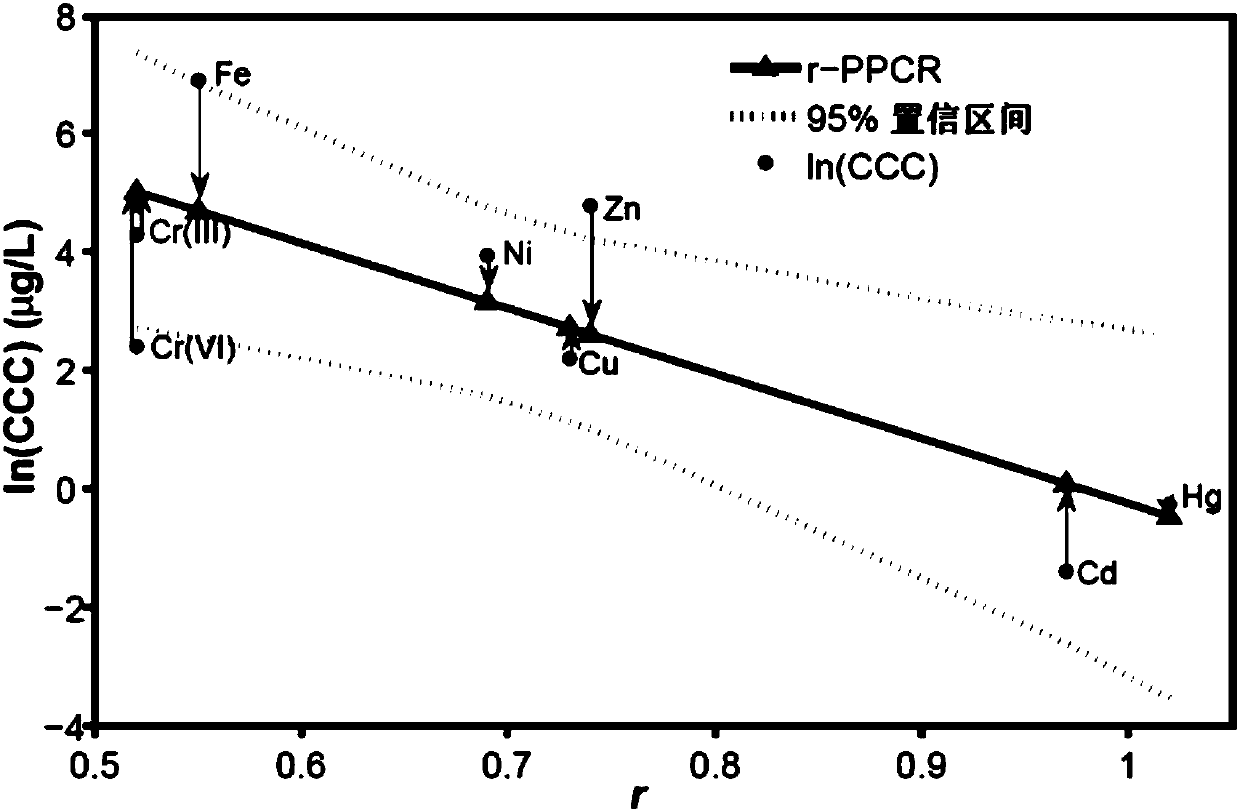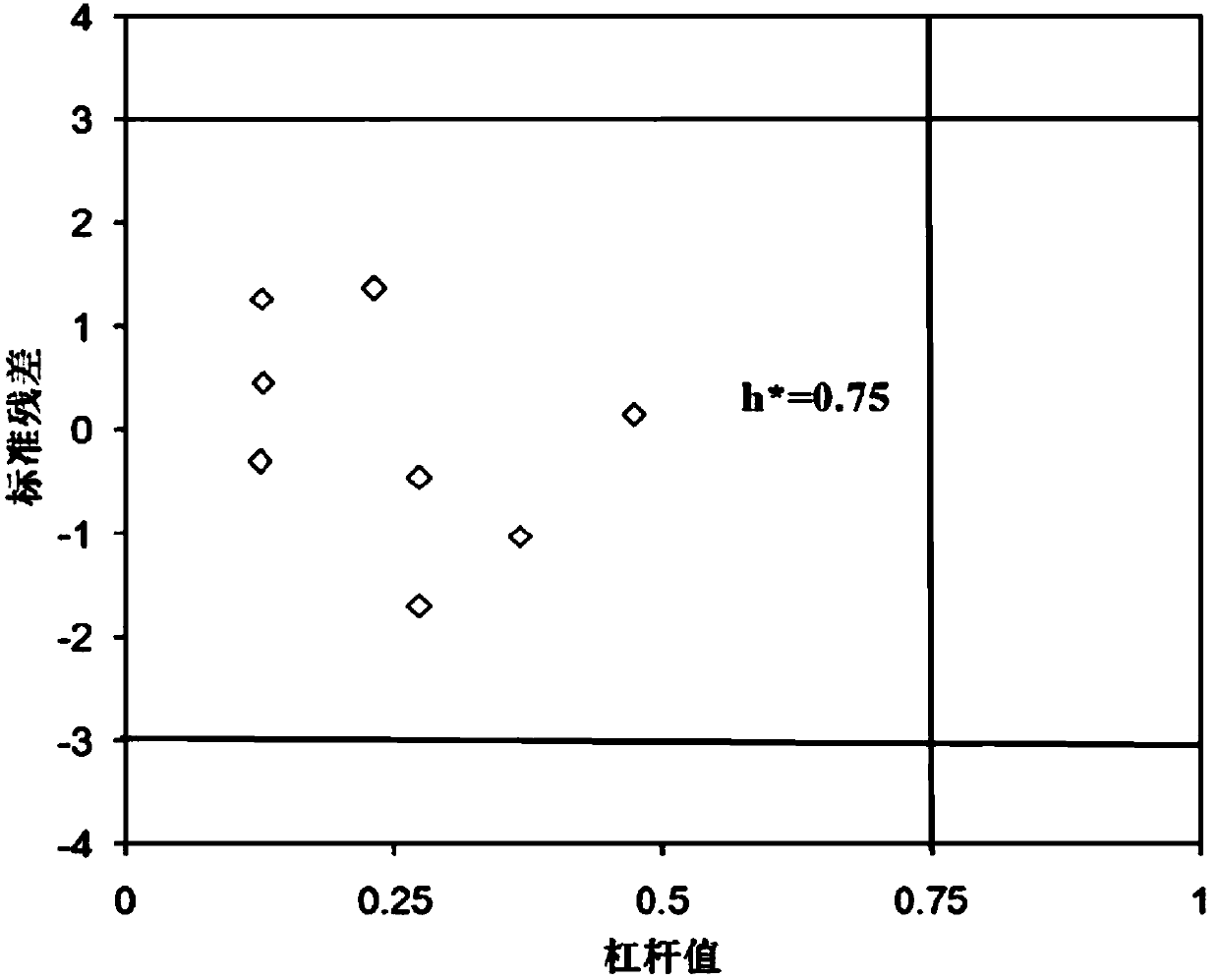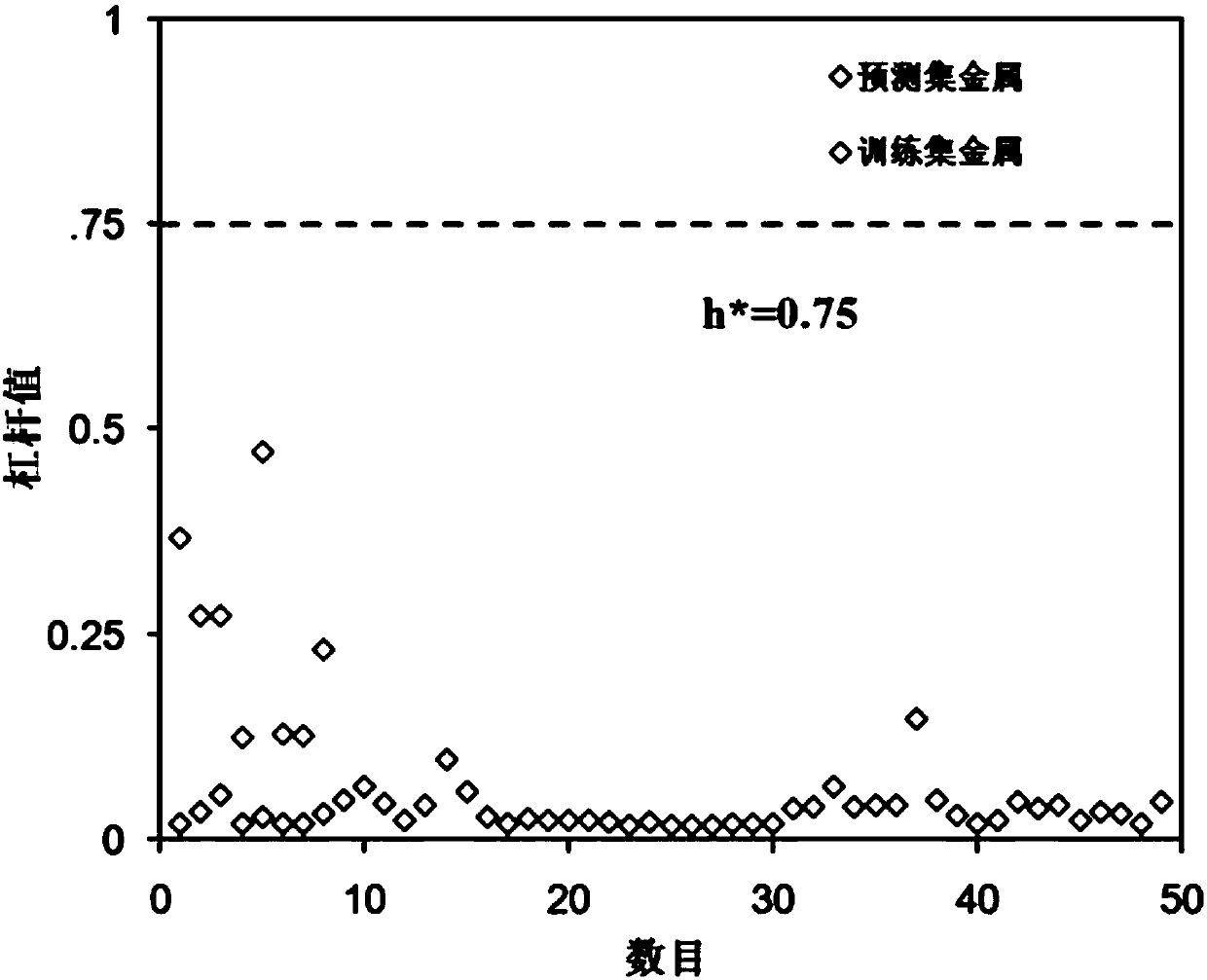CCCs Prediction Method Based on Transition Metal Protection Aquatic Organism Water Quality Benchmark
A prediction method and technology of transition metals, applied in the direction of instruments, calculations, electrical digital data processing, etc., can solve the problems that hinder the development of chronic water quality benchmark research of transition metals and consume a lot of manpower
- Summary
- Abstract
- Description
- Claims
- Application Information
AI Technical Summary
Problems solved by technology
Method used
Image
Examples
Embodiment 1
[0041] The CCCs prediction method of transition metal protected aquatic organism water quality benchmark, including the following steps:
[0042] S1. Data selection
[0043]Select 7 kinds of transition metals with benchmark continuous concentration values, i.e. Cr (comprising trivalent Cr and hexavalent Cr), Ni, Cu, Zn, Fe, Cd and Hg are sample elements, select the transition metal ion structure parameters (variable ) characterizes various physical and chemical properties of metal ions, and is used as a variable parameter for modeling;
[0044] The metal ion structure parameters include 26 kinds, which are atomic number, relative atomic mass, atomic radius, covalent radius, ionic radius, melting point, density at 300K, ionization potential change of heat of vaporization, boiling point, OX and OX -1 Ionization potential, electrochemical potential, electronegativity, first hydrolysis constant, covalent constant, atomic ionization ionization potential, softness index, ionization...
Embodiment 2
[0087] The CCCs prediction method for transition metal protection of aquatic organisms water quality benchmarks, including the following steps:
[0088] S1. Data selection
[0089] Select 7 kinds of transition metals with benchmark continuous concentration values, i.e. Cr (comprising trivalent Cr and tetravalent Cr), Ni, Cu, Zn, Fe, Cd and Hg are sample elements, select the transition metal ion structure parameters (variable ) characterizes various physical and chemical properties of metal ions, and is used as a variable parameter for modeling;
[0090] The metal ion structure parameters include 26 kinds, which are atomic number, relative atomic mass, atomic radius, covalent radius, ionic radius, melting point, density at 300K, ionization potential change of heat of vaporization, boiling point, OX and OX -1 Ionization potential, electrochemical potential, electronegativity, first hydrolysis constant, covalent constant, atomic ionization ionization potential, softness index, i...
PUM
 Login to View More
Login to View More Abstract
Description
Claims
Application Information
 Login to View More
Login to View More - R&D
- Intellectual Property
- Life Sciences
- Materials
- Tech Scout
- Unparalleled Data Quality
- Higher Quality Content
- 60% Fewer Hallucinations
Browse by: Latest US Patents, China's latest patents, Technical Efficacy Thesaurus, Application Domain, Technology Topic, Popular Technical Reports.
© 2025 PatSnap. All rights reserved.Legal|Privacy policy|Modern Slavery Act Transparency Statement|Sitemap|About US| Contact US: help@patsnap.com



